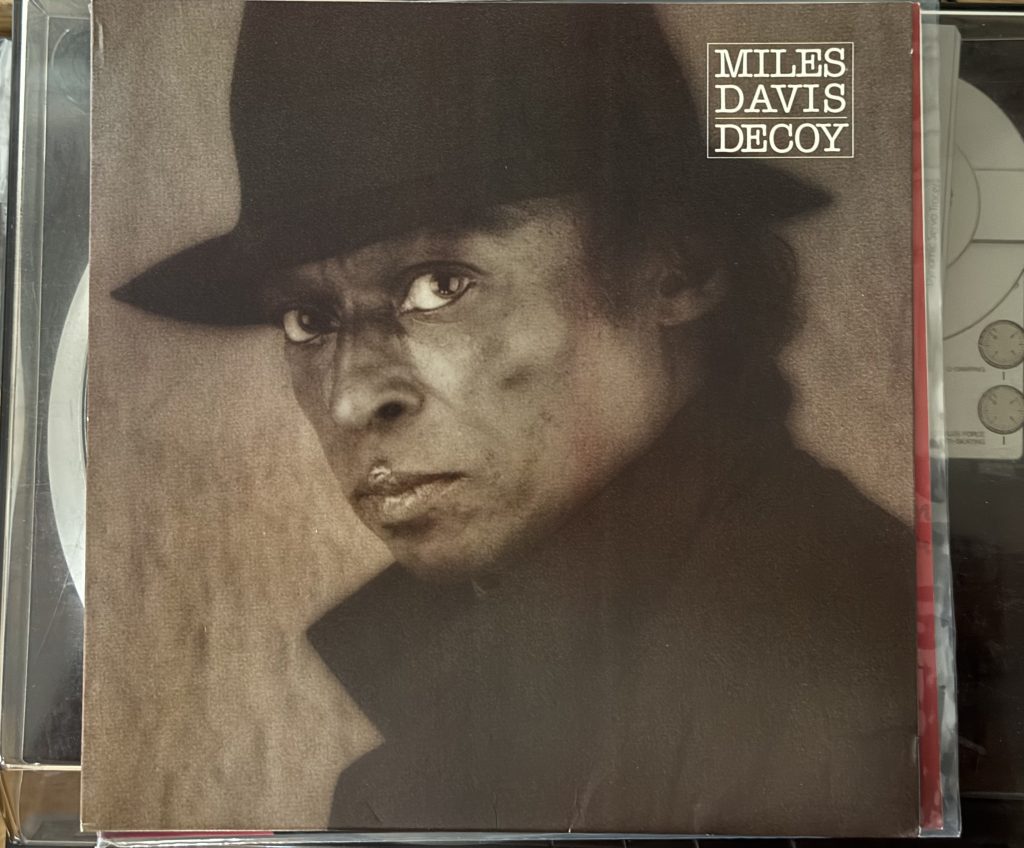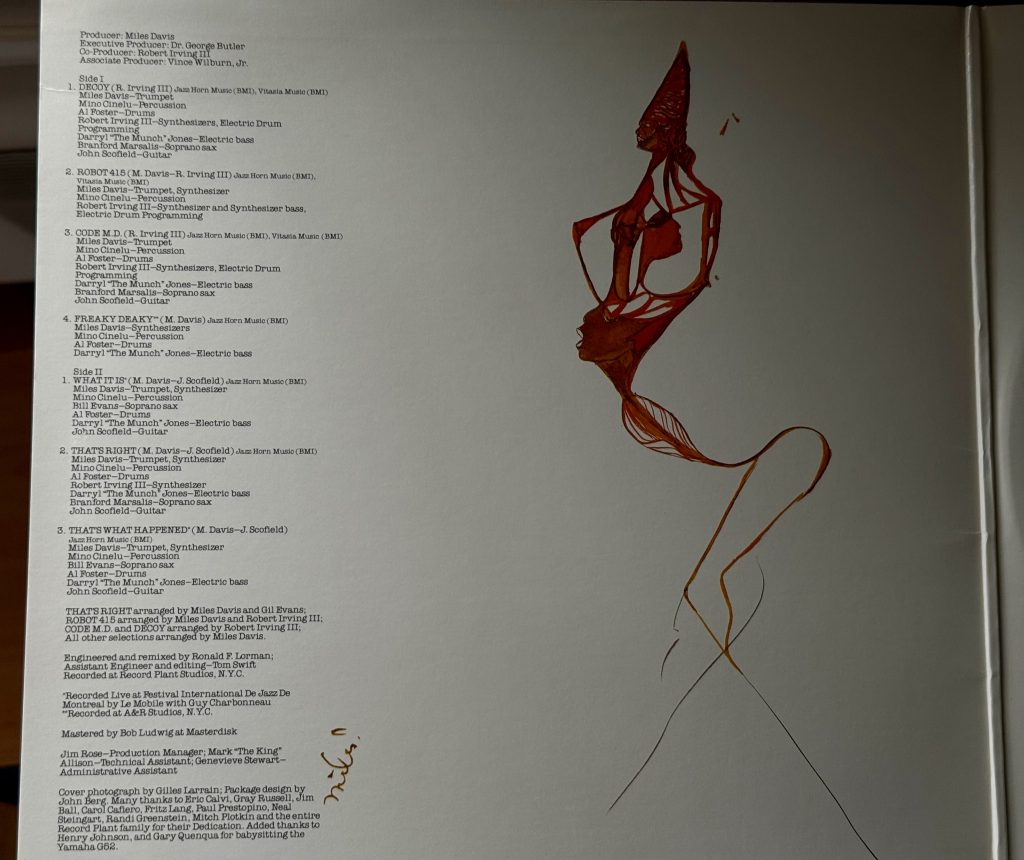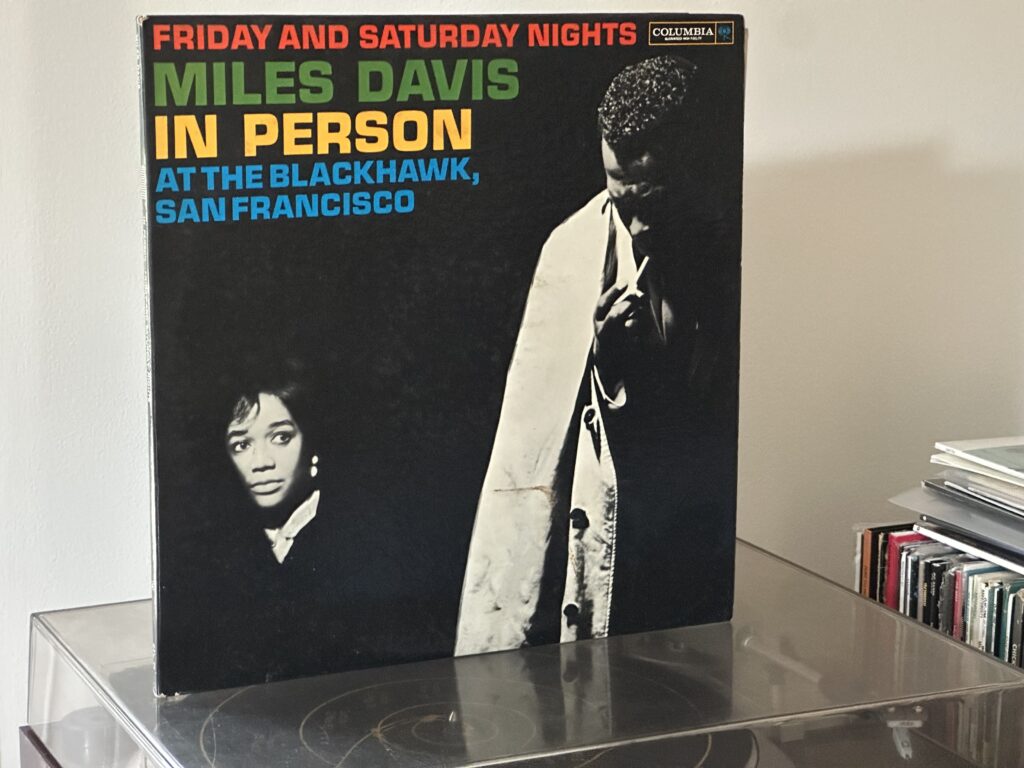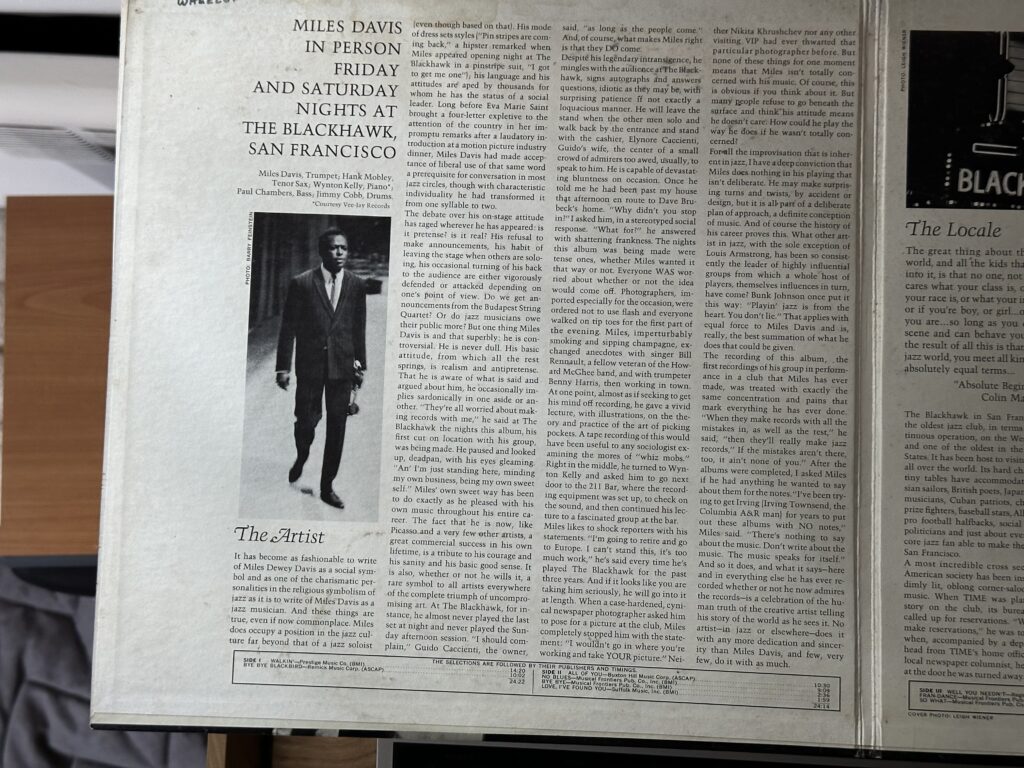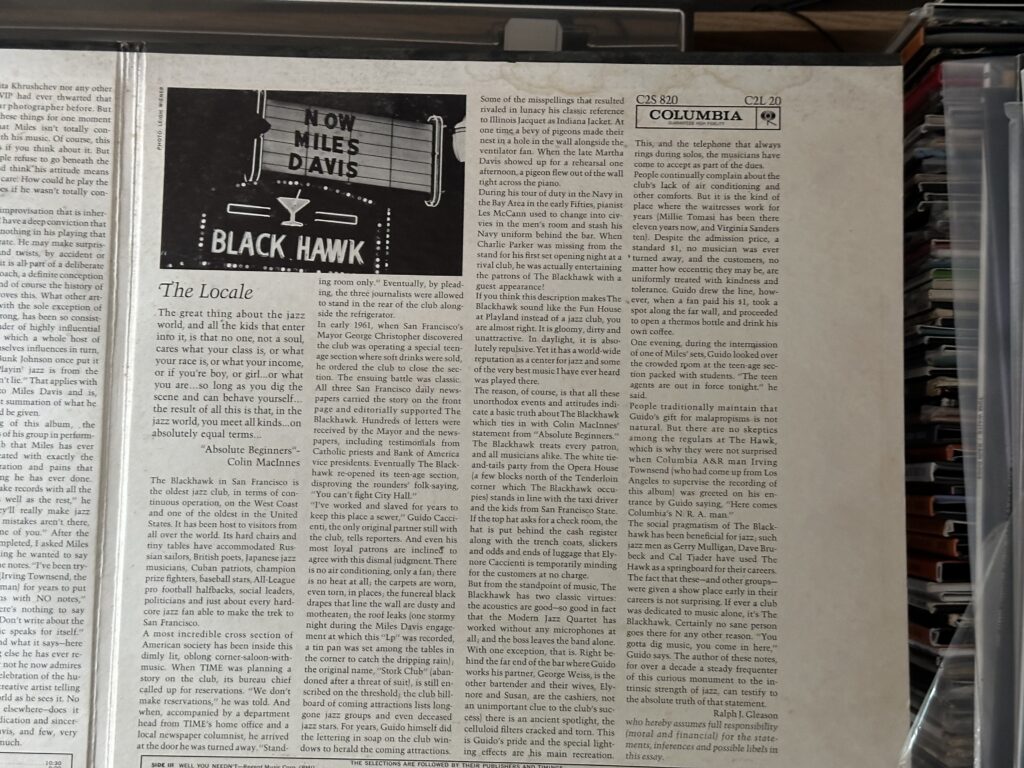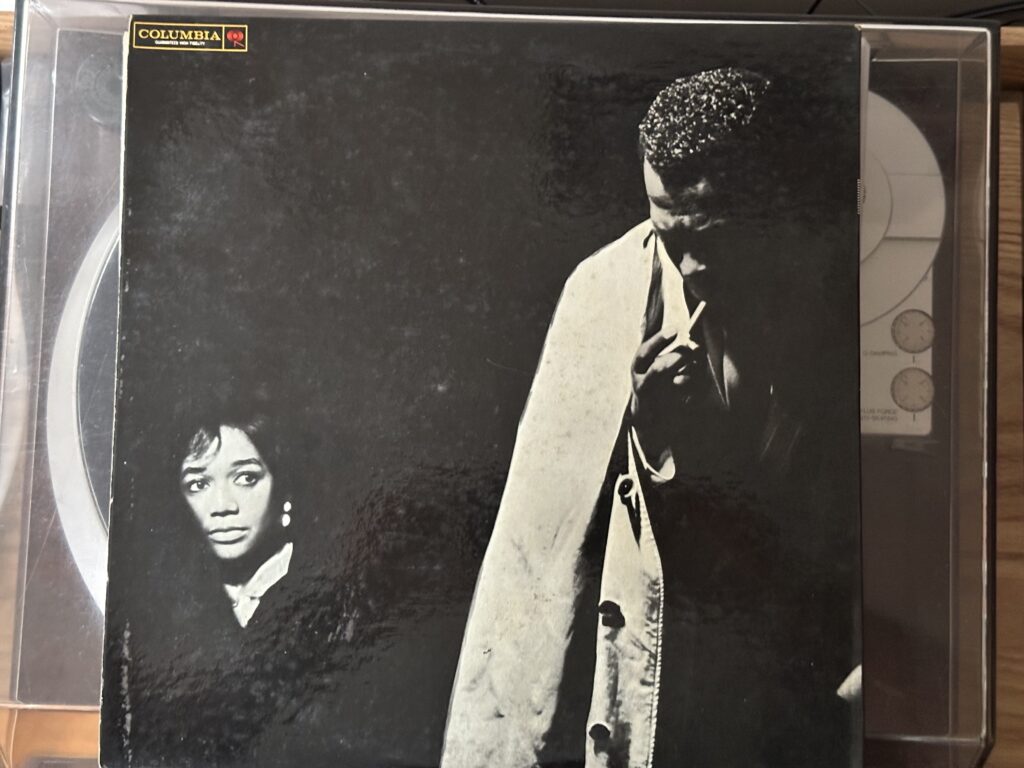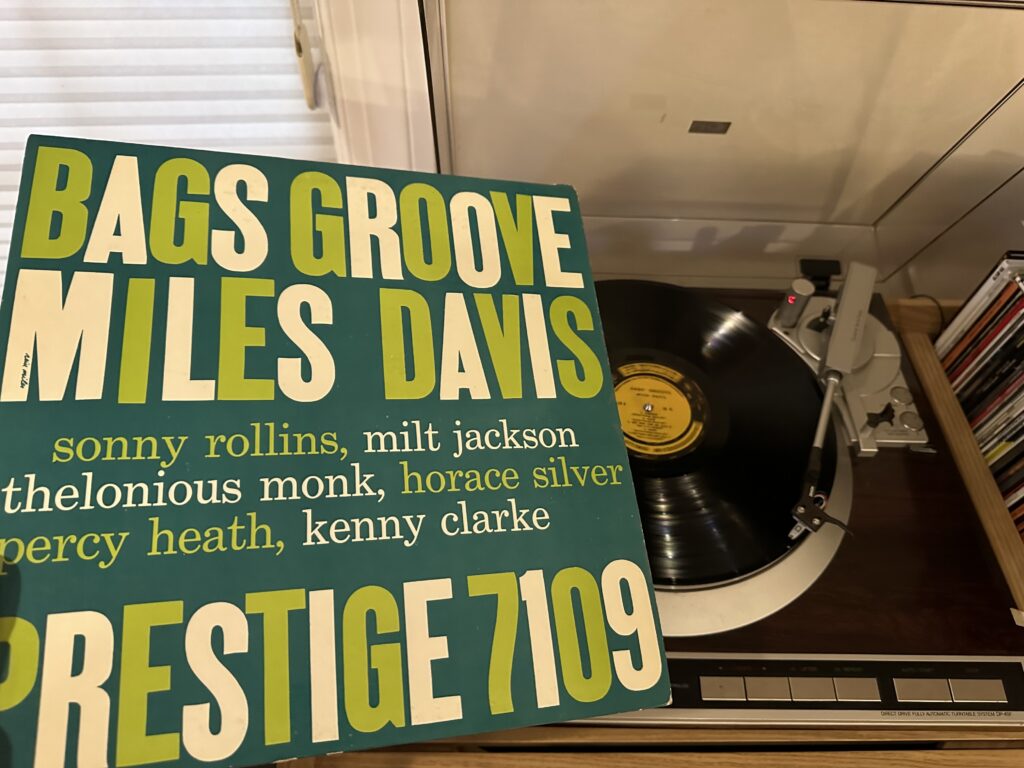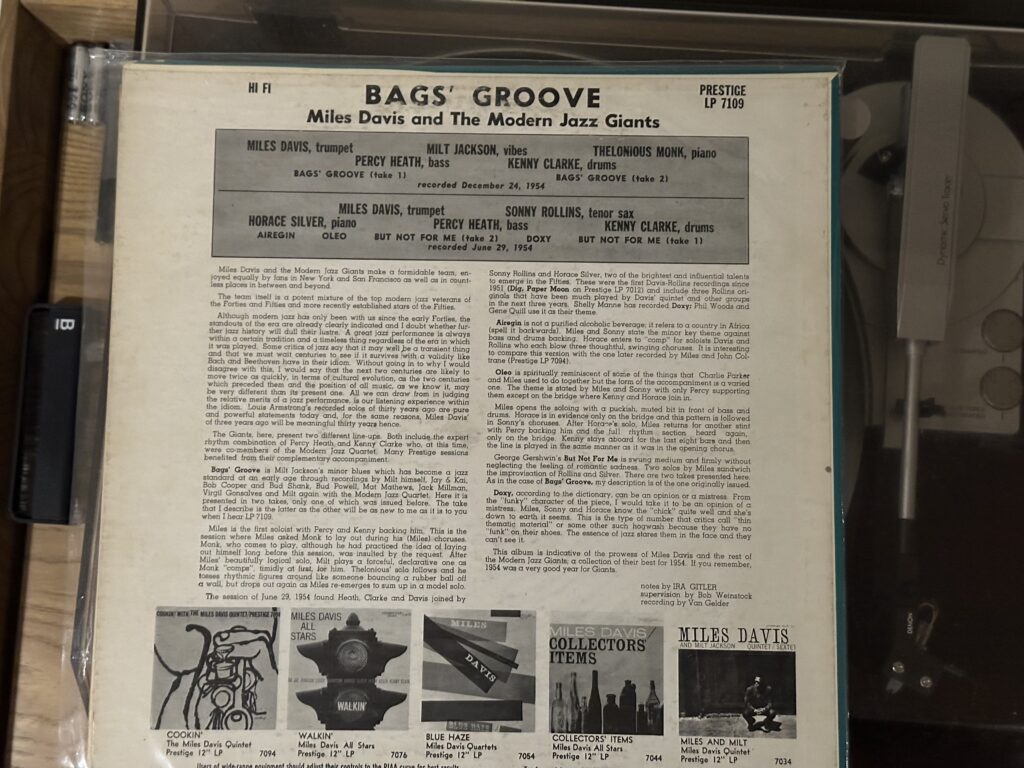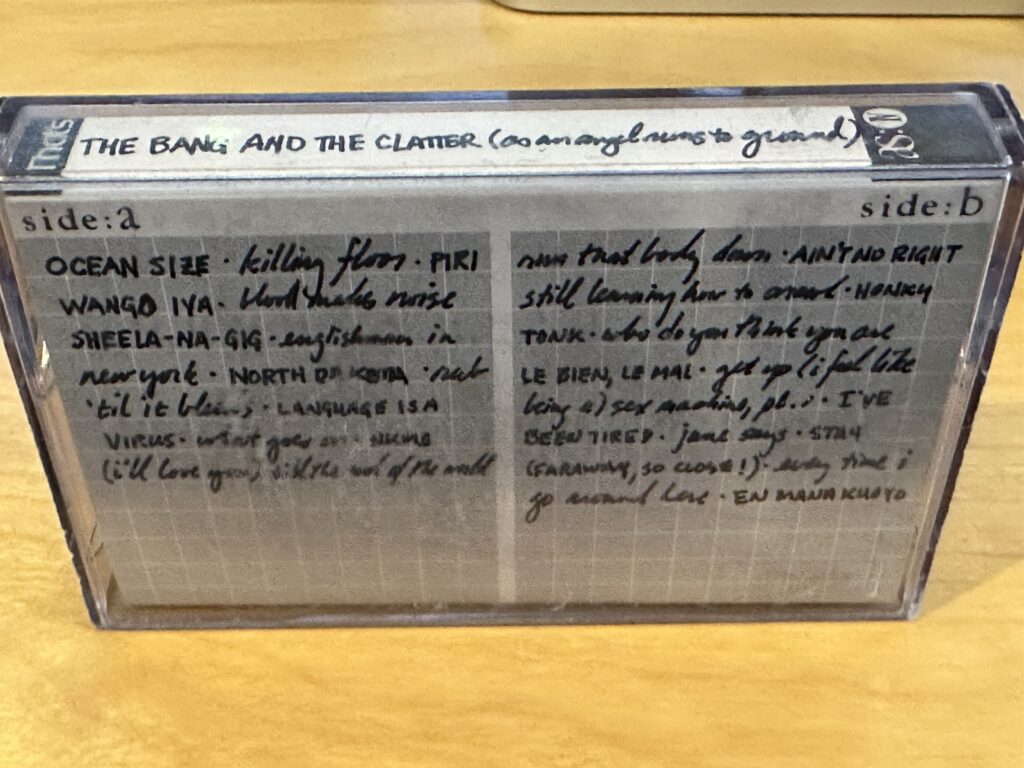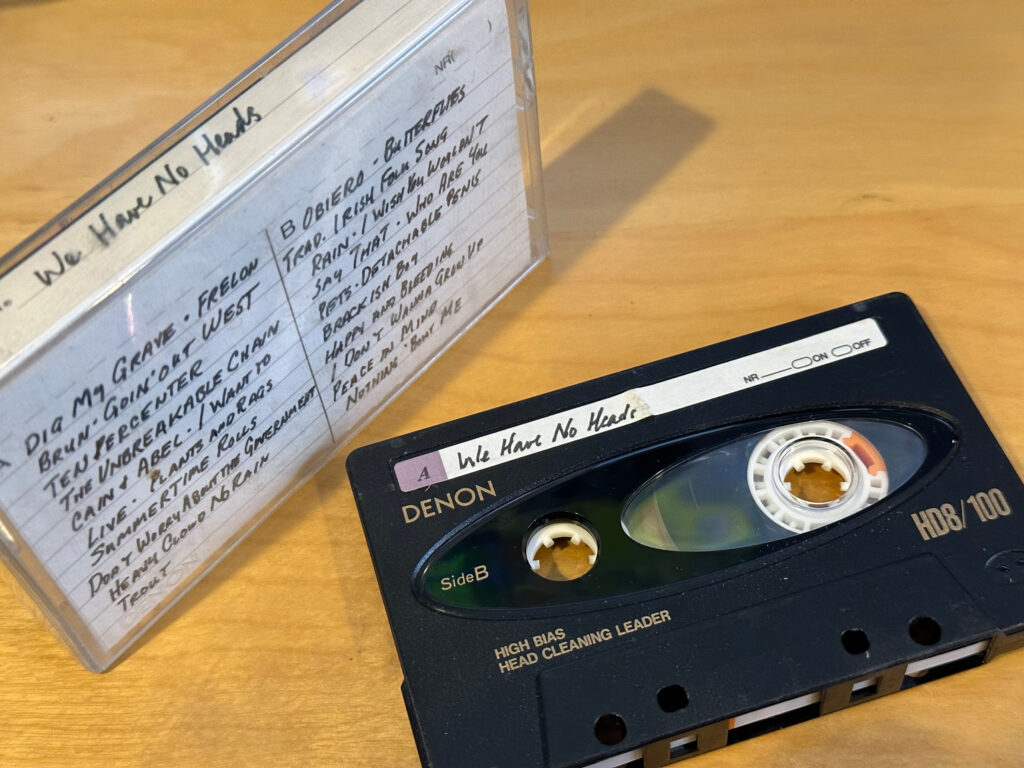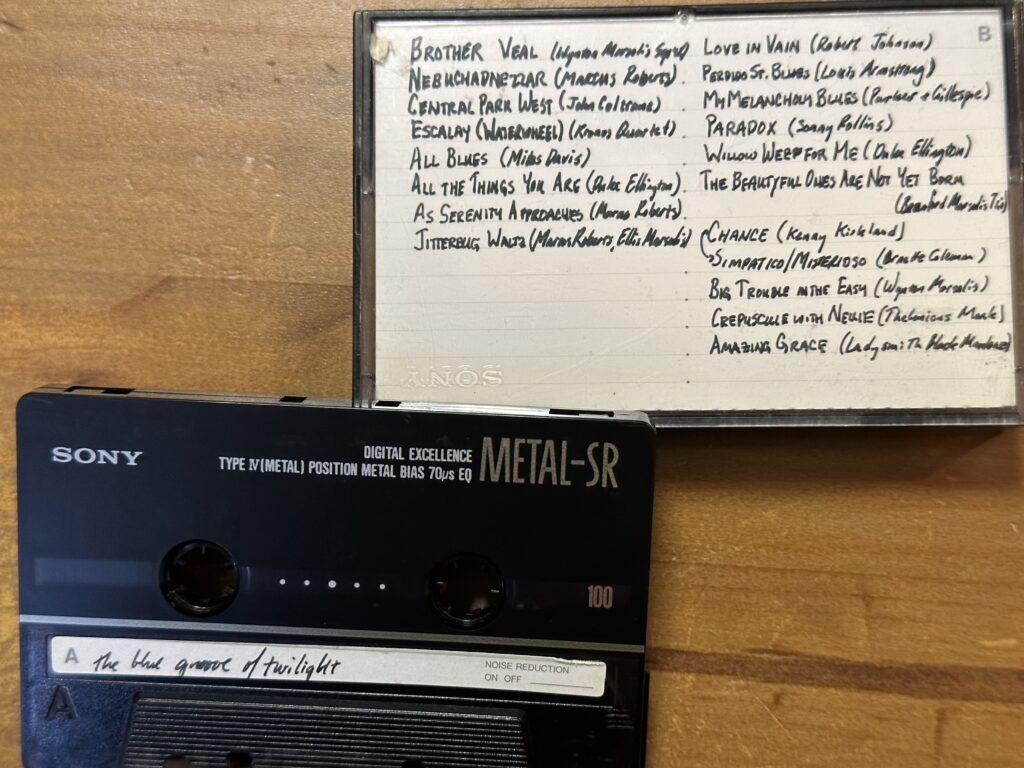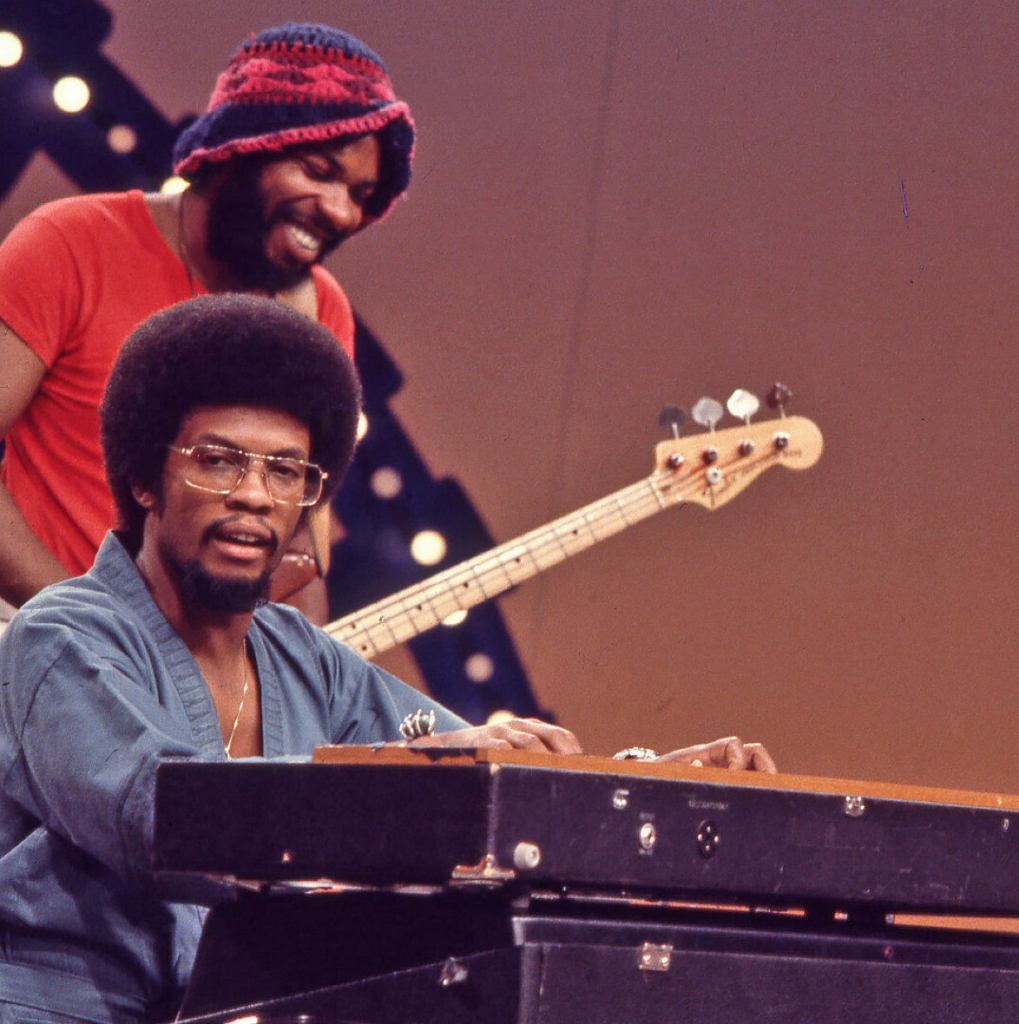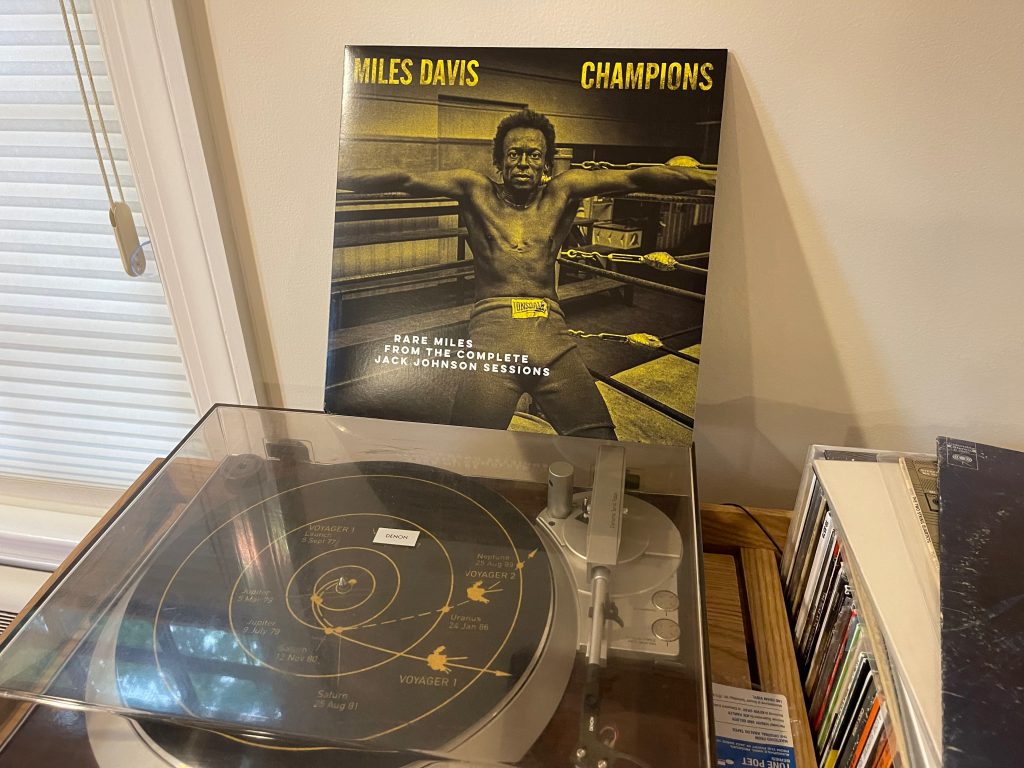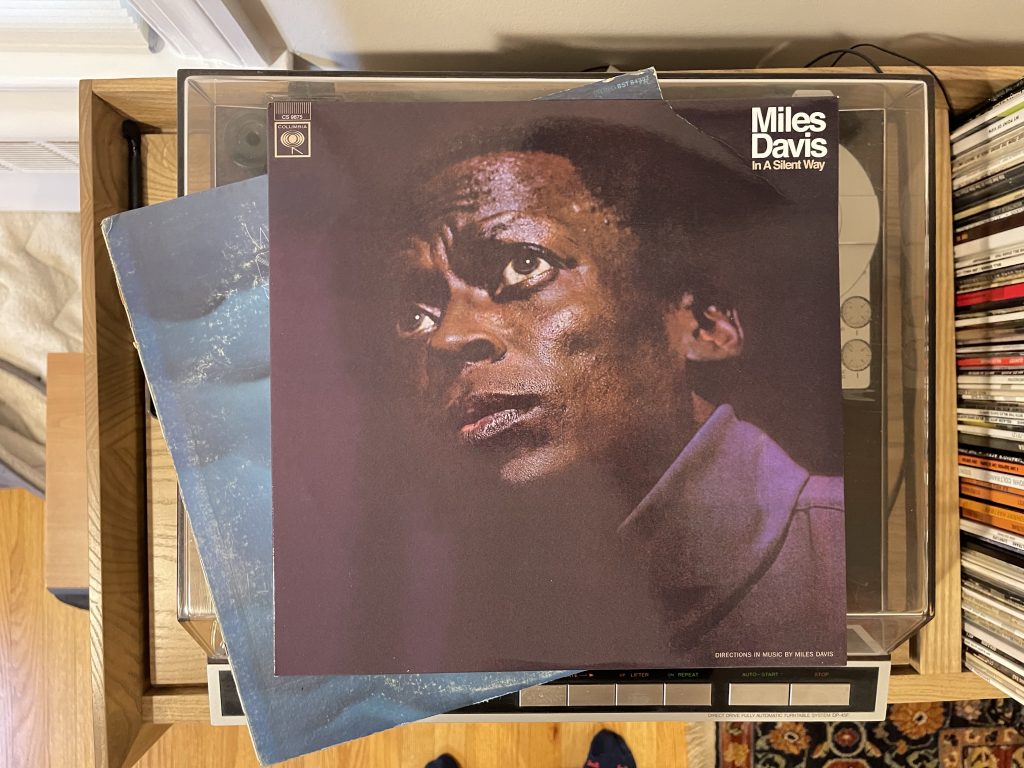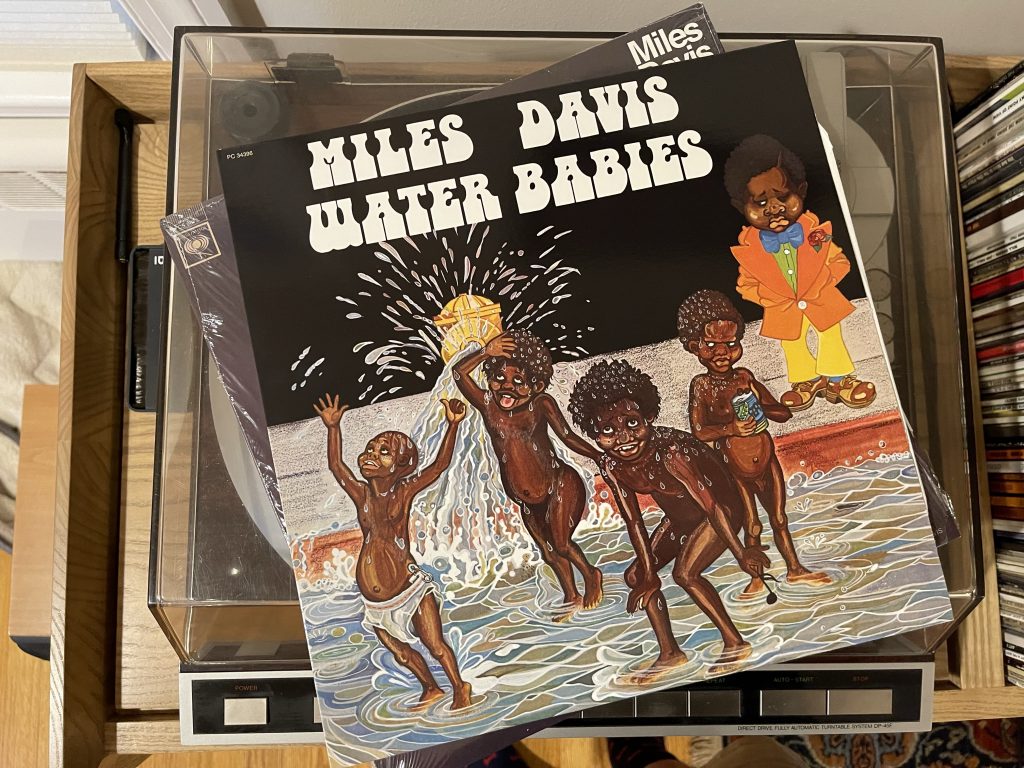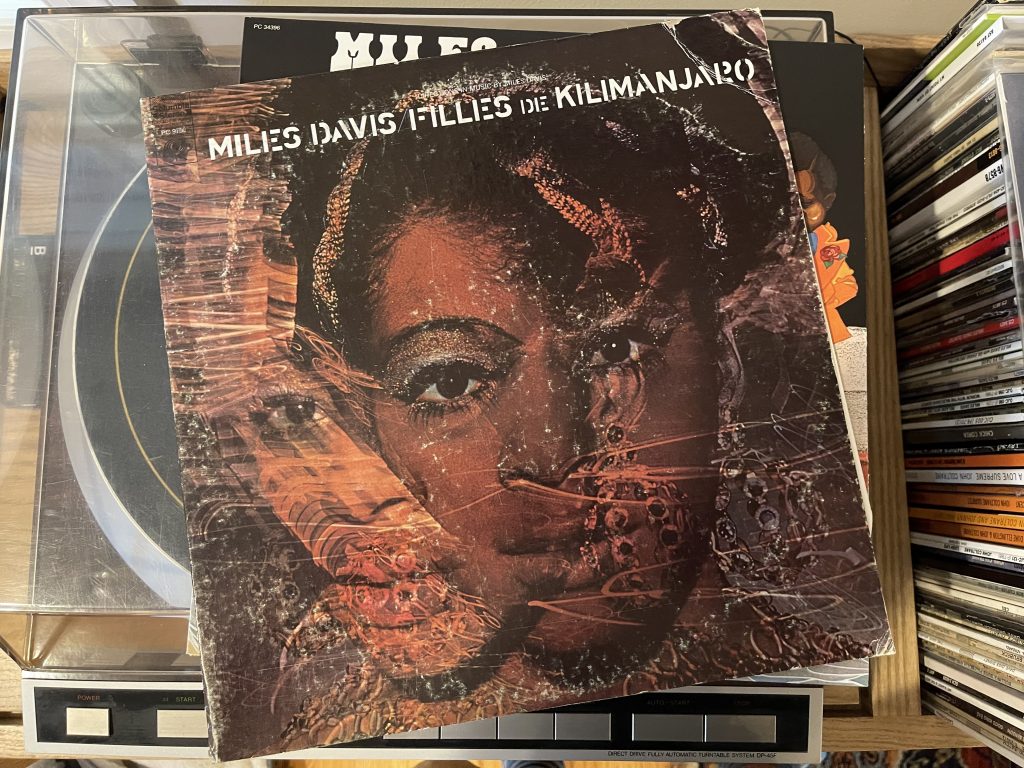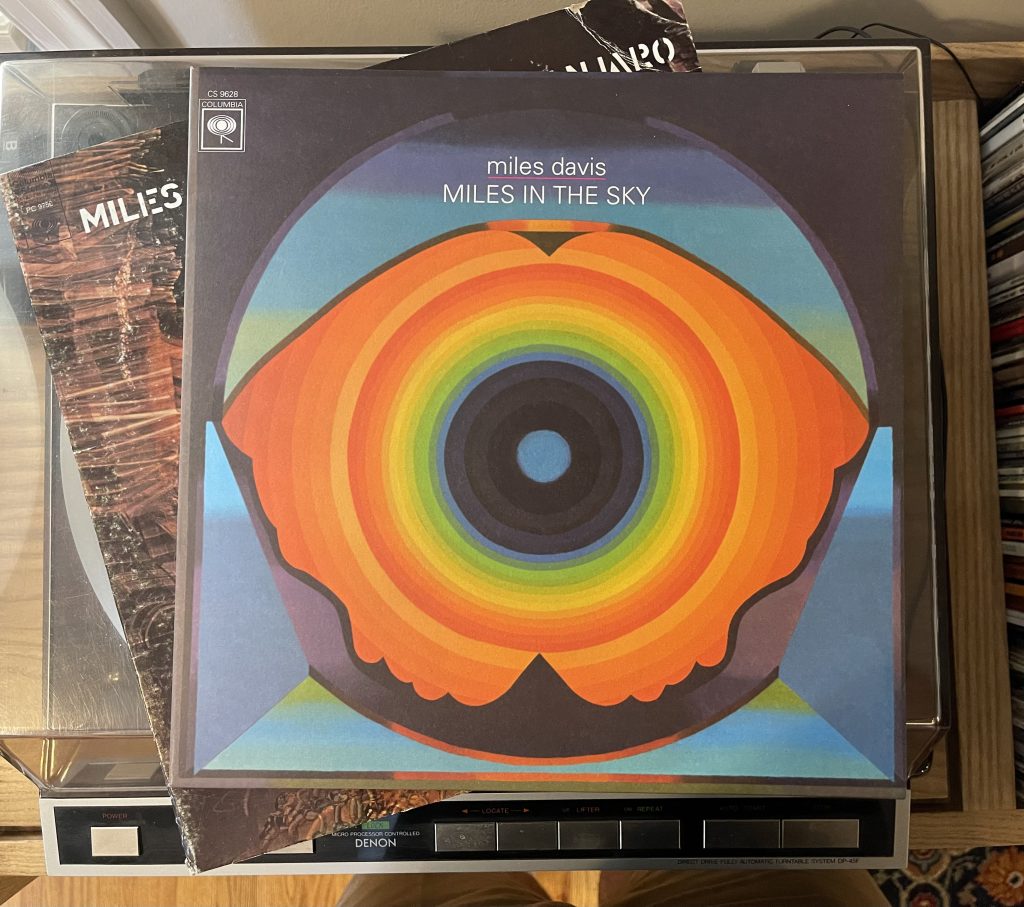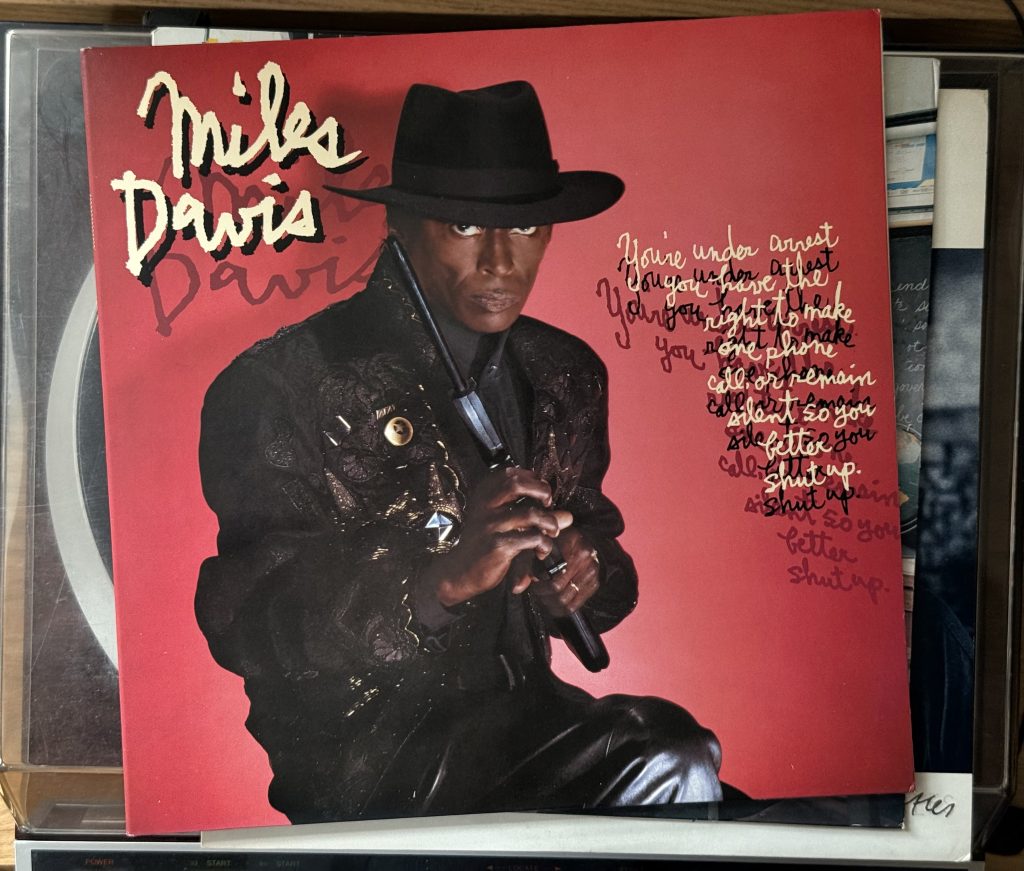
Album of the Week, March 15, 2025
We’ve heard Decoy, Miles’ 1984 attempt to equal Herbie Hancock at jazz-funk, and we’ve heard the alternate vision of jazz presented by Wynton Marsalis. But Miles was continuing to evolve his sound, even at this point in his career. The result was You’re Under Arrest, an album featuring original music and pop covers. It drove the Marsalis camp crazy.
I know this because when I saw Stanley Crouch (the critic who wrote the liner notes for Wynton’s albums) speak at the University of Virginia in 1991, following Miles’ death, he still insisted that Miles’ material from In a Silent Way on was garbage, saving special venom for You’re Under Arrest and its pop leanings.1 He spoke with horror of the cover, which showed Miles in a leather suit and hat, holding a Tommy gun. That there was role play here—Miles playing the part of the gangster, the well-off scofflaw—appears to have gone over Crouch’s head.
And yes, in some ways You’re Under Arrest is all about role play—the opening and closing tracks are scenes with dialog (and special guests). But there’s also role play of a different kind here. Miles still had plenty of funk in him, but he also appears to have been alert to what was going on in pop music, where a new embrace of melody was fueling the rise of a New Wave of musicians. Miles and his band, which for this outing included Darryl Jones on bass, Al Foster on drums, Robert Irving on synths, Bob Berg on tenor and soprano saxophone, and both John Schofield and—for the first time since the early 1970s—John McLaughlin on guitar, shifted direction and, improbably found their way inside that pop sound.
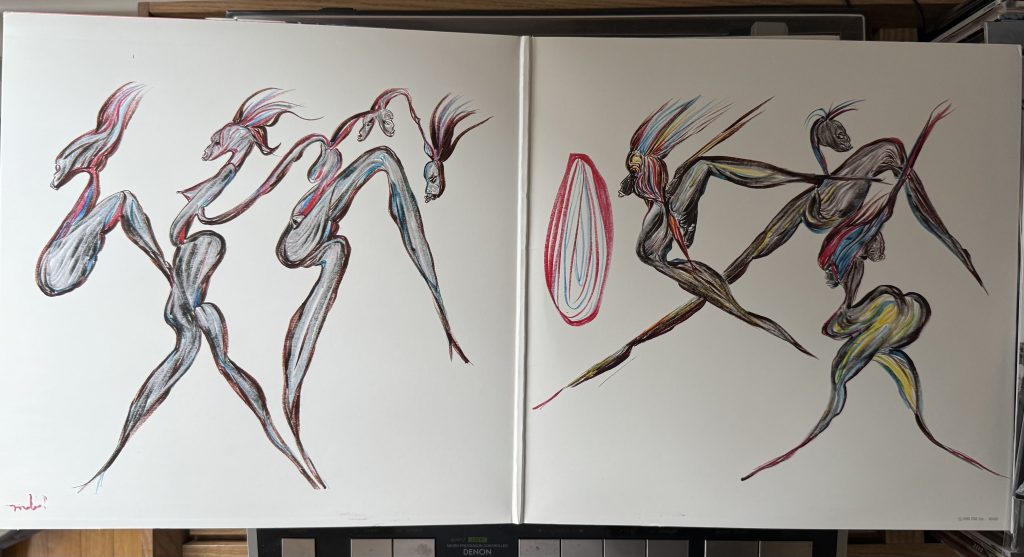
That’s not to say that the funk was gone. “One Phone Call/Street Scenes,” featuring dialog between a police officer who’s pulled Miles over in his Ferrari and Miles insouciantly responding, “Arrest some of this!” (with both voices done by Miles), features an incessant bass, drums and synth riff over which John Scofield wails and Miles plays a tight riff in the higher end of his range. At the end, another conversation, this time between a Spanish speaker, a Polish speaker, and a French policeman (played, improbably, by Sting), who issues a translation of the Miranda warning.
The second track is done with playing around, but it’s not heavy—in fact, it’s “Human Nature.” The track, written by Steve Porcaro of Toto, had caught the ear of Michael Jackson while Porcaro was assisting with the production of Jackson’s monster album Thriller. Jackson had John Bettis, a lyricist who had collaborated with the Carpenters (“Top of the World”), the Pointer Sisters (“Slow Hand”), Barbara Mandrell (“One of a Kind Pair of Fools”), and others,2 rewrite the lyrics. It became a top 10 hit, which is presumably why Miles had heard it. But listening to him play the melody, it’s clear that he found something deep in it. His clear trumpet plays it straight, as a ballad, giving the same sort of space to the track that he once found in “My Funny Valentine.” And his technique is at a much higher level than it was on Decoy, where he seemed to still be suffering from health challenges. Here the trumpet is front and center; indeed, if there’s anything to criticize about the track, it’s that the rest of the band is basically used only to provide a pop background. There’s very little of interest in the arrangement from a jazz perspective, but it’s very pleasant as pop music.
“Intro: MD1 / Something On Your Mind / MD2” takes us back into the funk, but thankfully gives the band way more to do. Scofield gets a few fierce solos, and the band’s pulse is tight beneath both him and Miles. The trumpeter’s solo splits the difference between the pure funk of “One Phone Call” and the pop melodicism of “Human Nature.” The track ends in a swirl of synthesizers and a hint of a march rhythm.
Miles’s trumpet introduces “Ms. Morrissine,” a relentlessly funky pop track that features washes of distinctively mid-1980s synthesizer sound (there’s a certain watery quality to some of the sounds, including the drums, that couldn’t come from any other time) beneath Miles’ lyrical playing. John McLaughlin, who hadn’t played with Miles since 1972’s On the Corner, adds hints of rhythm and brief guitar lines that twine around the edges of the band, but gets a proper solo at the end. A McLaughlin overdub introduces the tag, a brief excerpt from “Katia: Prelude” that fades out the first half.
“Katia” fades in to start the second half of the album, with McLaughlin stating the first melody and taking a lead role for the first two minutes. Miles’ improvisations here are less melodic, more funky, and the track feels more alive and less programmed; even where Irving’s keyboards take over, McLaughlin torches the edges of the track and takes over again. He and Miles trade leads throughout the second half of the song. It’s a workout but a fun listen.
“Time After Time,” written by Cyndi Lauper with Rob Hyman of the melodica-heavy band The Hooters, returns to the format of “Human Nature.” To my ears the effort here is less successful. Miles’ playing is solid but mixed lower relative to the backing track, and he finds less swing in his melody. There are hints of interest in some of Scofield’s contributions, but the synths ultimately swamp this one for me. Miles would revisit the track live throughout the rest of his life with more satisfactory results; I especially like the version from the 1991 Vienne Jazz Festival, recorded a few months before his death; Miles was playing a lot less, but the arrangement was sparser and gave each musical utterance room to shine.
“You’re Under Arrest,” credited to Scofield, returns to the jazz-funk well once more for a thorny blues. After the guitarist introduces the number, Miles unleashes a blistering set of runs, trading off with Scofield as he did with McLaughlin on “Katia.” The melody is recapitulated by Irving, then Bob Berg takes a brief solo on tenor sax before Scofield rips through a set of fiery improvisations. Throughout Jones plays fluidly beneath the brisk keyboard runs, providing an elastic low-end.
“Medley: Jean-Pierre/You’re Under Arrest/Then There Were None” closes as the album opens, with a conceptual piece. A wistful ballad is slowly covered by the sounds of catastrophe: a crying child, wailing women, the sound of a massive explosion, and a tolling church bell. It’s an unexpectedly somber end, left unexplained in the liner notes.
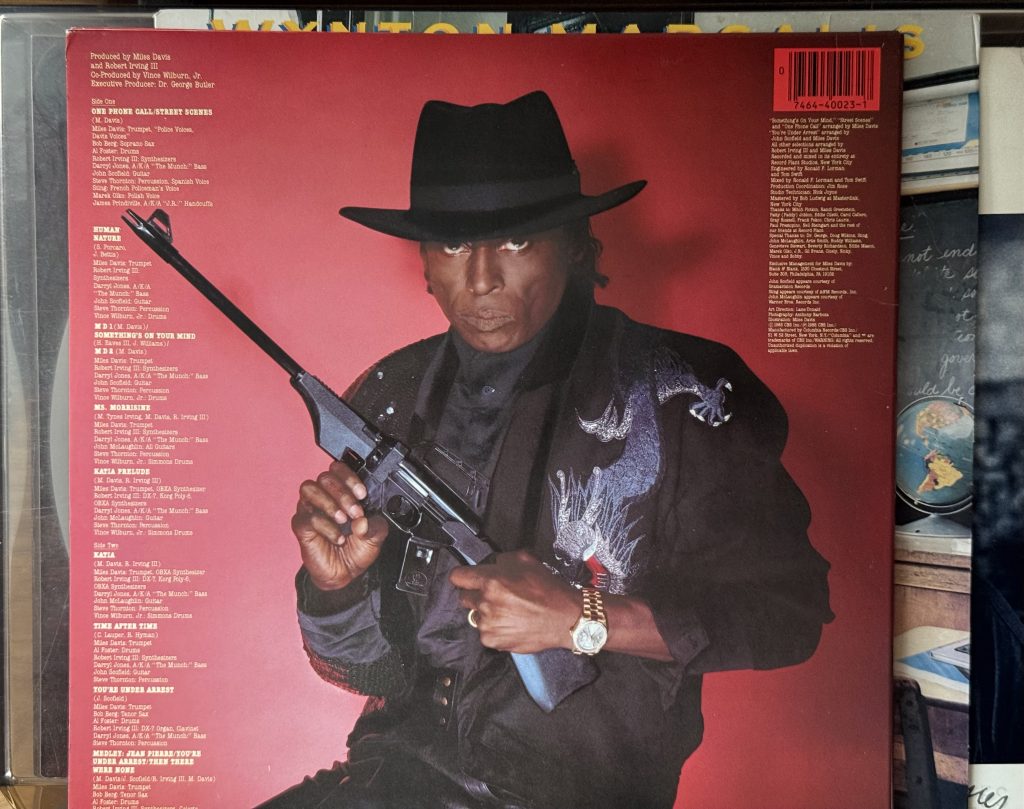
But the likely answer is that the track marked an ending; specifically, to Miles’ thirty-year-long association with Columbia Records. While on tour in early 1985, after recording You’re Under Arrest but before its release, he signed a contract with Warner Brothers, and recorded the rest of his career on the label. He moved on to new collaborators, with bassist Marcus Miller playing the arranger role that had been Irving’s for the first half of the 1980s. Other members of the band scattered, but several of them went on to non-traditional roles on the other side of the jazz/pop fence. We’ll hear about that in a few weeks. Next week, though, we’ll give a listen to another outing from the Marsalis brothers, this one considerably more successful than Hot House Flowers.
You can listen to this week’s album here:
BONUS: Miles was listening to a lot of pop music in the mid-1980s, and recording arrangements of it. Not all the covers from this session made it onto the album, though. Here’s his cover of Tina Turner’s comeback single, released for the first time in 2022 on The Bootleg Series, Vol. 7: That’s What Happened:
BONUS BONUS: Miles’ way with pop songs and his insistence in updating the American Songbook with more modern material influenced many later jazz musicians. One direct influence is the adoption by other jazz musicians of the material he covered in his 1980s albums. Eva Cassidy covered “Time After Time” on the posthumous album of the same name in 2000, and pianist and composer Vijay Iyer covered “Human Nature” on two separate albums, 2010’s Solo and 2012’s trio recording Accelerando. Here’s a live version with the trio:
- This lecture was my first attempt to ask tough questions of a speaker with whom I disagreed. I asked Crouch, regarding his words on Miles, how he felt about Branford Marsalis’s work with Sting, given that Marsalis had previously played more “straight” jazz with his brother. I recall Crouch gave a non-answer, which I suppose was inevitable. ↩︎
- Among other later collaborators, Bettis would work with Madonna on “Crazy for You,” Peabo Bryson on “Can You Stop the Rain,” and New Kids on the Block on “If You Go Away.” That’s what you call range. ↩︎

